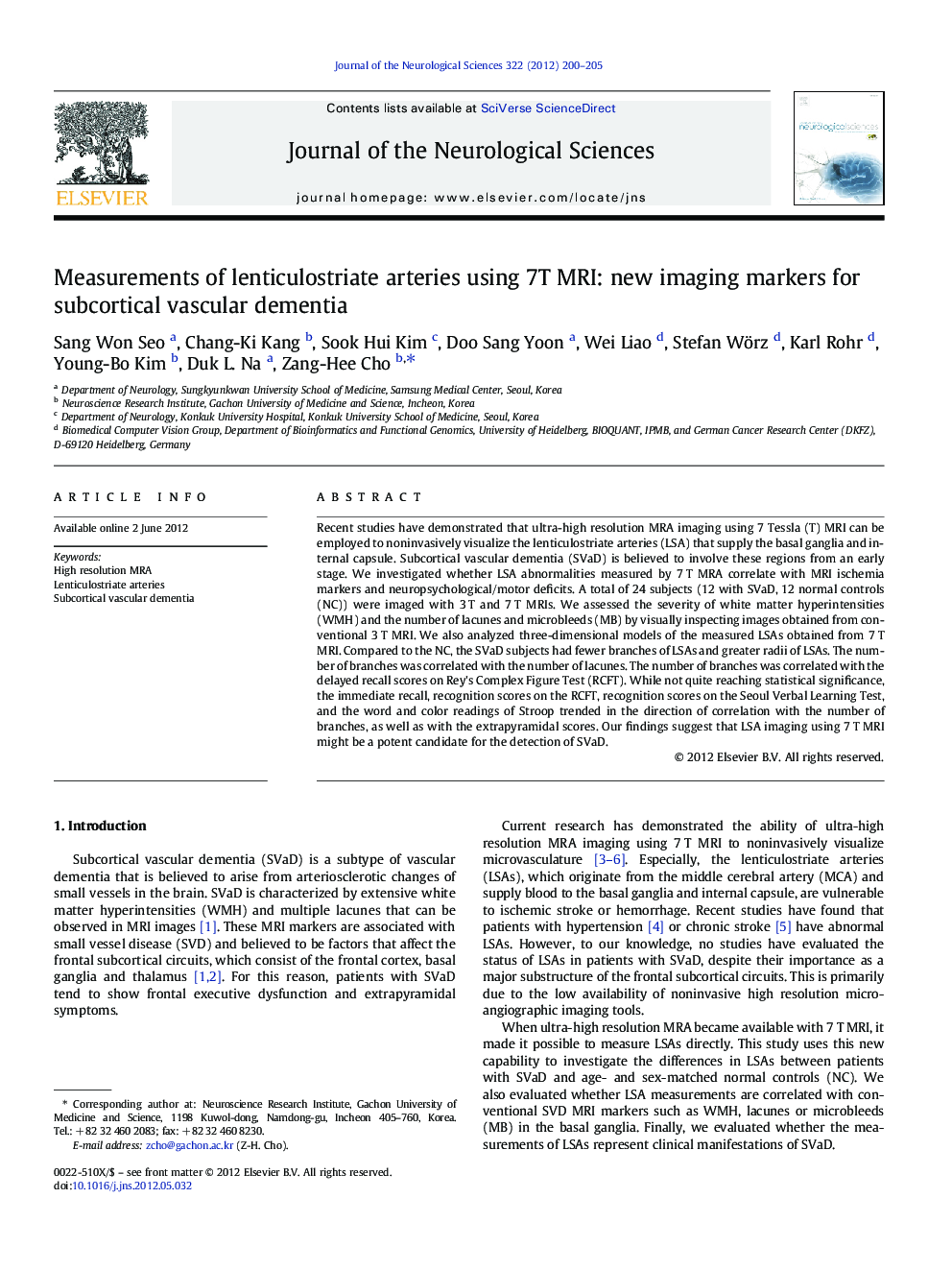| Article ID | Journal | Published Year | Pages | File Type |
|---|---|---|---|---|
| 8280289 | Journal of the Neurological Sciences | 2012 | 6 Pages |
Abstract
Recent studies have demonstrated that ultra-high resolution MRA imaging using 7 Tessla (T) MRI can be employed to noninvasively visualize the lenticulostriate arteries (LSA) that supply the basal ganglia and internal capsule. Subcortical vascular dementia (SVaD) is believed to involve these regions from an early stage. We investigated whether LSA abnormalities measured by 7Â T MRA correlate with MRI ischemia markers and neuropsychological/motor deficits. A total of 24 subjects (12 with SVaD, 12 normal controls (NC)) were imaged with 3Â T and 7Â T MRIs. We assessed the severity of white matter hyperintensities (WMH) and the number of lacunes and microbleeds (MB) by visually inspecting images obtained from conventional 3Â T MRI. We also analyzed three-dimensional models of the measured LSAs obtained from 7Â T MRI. Compared to the NC, the SVaD subjects had fewer branches of LSAs and greater radii of LSAs. The number of branches was correlated with the number of lacunes. The number of branches was correlated with the delayed recall scores on Rey's Complex Figure Test (RCFT). While not quite reaching statistical significance, the immediate recall, recognition scores on the RCFT, recognition scores on the Seoul Verbal Learning Test, and the word and color readings of Stroop trended in the direction of correlation with the number of branches, as well as with the extrapyramidal scores. Our findings suggest that LSA imaging using 7Â T MRI might be a potent candidate for the detection of SVaD.
Keywords
Related Topics
Life Sciences
Biochemistry, Genetics and Molecular Biology
Ageing
Authors
Sang Won Seo, Chang-Ki Kang, Sook Hui Kim, Doo Sang Yoon, Wei Liao, Stefan Wörz, Karl Rohr, Young-Bo Kim, Duk L. Na, Zang-Hee Cho,
